Washer machine does not collect water. Overlapping water supply. Reasons: the washing machine does not collect water
Water is not collected in the washing machine, or its pressure is too small and poorly washes washing powder. At the same time, many modern products show an error message, for example, LG washing machines can display Atlas, washing machines Samsung, and E1 washing machines.
Determine why the washing machine does not collect water in the tank
The level of water in the washing machine tank is determined by the washing program and the technical characteristics of the product model. If it seems to you that in a typewriter, or it takes too long to type - then follow the further instructions.
Is there enough water pressure in your plumbing system?
The first is to check the water pressure in your plumbing by opening the sink tap. If the water is not under pressure, but “just flows out” from the tap, the machine will not be able to gain the required level in the required time, and may also issue an error code. As you understand, in this case it is not the repair of the washing machine that is required, but the call of a plumber.
If the pressure is normal, then the water supply system in the washing machine itself is clogged. First, unscrew the water intake hose from the machine and check the water outlet. If the water pressure is insufficient, then the hose or tap on the washing machine may be blocked.
Cleaning the filter mesh
Next, check the water supply filter. In all automatic washing machines, protection against mechanical impurities — rust, sand, etc. — is provided. As a rule, this function is performed by a fine mesh filter installed at the point of connection of the water intake hose to the washing machine. Remove the filter, as shown in the figure, wash it under running water and install it in place.
The coarse mesh is also sometimes installed in the water inlet hose and in the ball valve on the washing machine. This is also subject to verification and cleaning. In another case, if no water is poured into the washing machine, then the water supply hose is probably blocked or transferred, you can determine its serviceability by replacing it with a new one.
Faulty inlet valve as possible reason for lack of water intake
Independent valve repair is difficult to implement, but you can check it yourself. To do this, remove the top cover of the device, and in the place of connection of the hose for the inlet one or more valves of the water set are detected. Having made a visual inspection of the coils (unscrewing nothing and not removing it from the machine), and if there were no suspicious facts like plastic melting, blackening or burning smell, then proceed to the next step - try to ring the electromagnetic coil. Its electrical parameters, and specifically the resistance of the winding, must correspond to a value of 3.6 kΩ, more details about the characteristics of the valves here
If it is significantly less, or not at all, it will be necessary to replace the valve of the washing machine.
But when a washing machine draws water, but does not wash it, this is another story.
Household appliances is a modern housewife assistant. We are all so accustomed to using various devices on a daily basis that any of their incorrect work causes genuine horror. For example, you started washing, put things in the washing machine, put the powder in powder, chose a program and ... Nothing happens, the washing machine does not get water. It seems the situation is difficult, because without water "not the heights and syudy." But do not aggravate the situation, since the reasons that the machine does not get water can be quite banal. Let's look at and consider what simple or complex reasons led to the cancellation of the washing process.
The washing machine does not draw water - the reasons
Usually, after several years of operation, there is often a malfunction when the washer does not draw water at all or does it rather slowly. In most cases, this problem can be solved with your own hands, without calling the wizard.
We list the most simple and banal reasons for poor performance of the unit:
- Lack of water in the water supply or insufficient pressure. The only way to solve the situation is to wait for the water. Perhaps, utilities have started regular maintenance work. If the pressure is low constantly and there is no required required pressure, the issue can be solved by installing the pump by installing it on the inlet line that supplies water to your apartment. Pick up a device of such power that the pump provides water not only washing "assistant", but also the kitchen, toilet and shower.
- Incorrect position of the water supply tap in the unit. In this situation, it is useless and stupid to panic, as well as to call the master - just try to open the tap until it stops. If the valve is broken, replace it.
- The lock in the hatch is broken (the door is not tightly closed). The reasons why the washing machine does not close:
- There is no fixation when the door is closed.
- Elements of blocking of a door of the hatch do not work.
Important! If there is no fixation of the door in the hatch, the plastic guide located under the tongue for fixing is damaged. Such a breakdown could occur due to tilting of the hatch door - during the long-term operation of the unit (the hinges on the door were loosened). In some models, the door is not fixed due to a broken hook or a special tongue that could move or deform. Fix the damage and the problem disappears - the equipment will work as before.
- Clogged filter at the entrance. To date, before such a device must install a filter from a metal mesh. It delays sand, pieces of rust, dirt, which come from a centralized water supply network. If the filter is clogged, respectively, it reduces the water pressure. As a result, the device does not work efficiently and you are tormented by the question of why the washing machine does not get water. To remedy the situation, you need to check the filter itself and part of the adjacent pipe for blockage.
- Clogged hose, through which water is supplied to the typewriter. If water is collected slowly, the reason may be a hose through which water is supplied from the water supply system to the unit. Disconnect the brush from the machine and flush it by pushing the hose with your hands to break the resulting blockage. If it is not possible to wash it, replace the part.
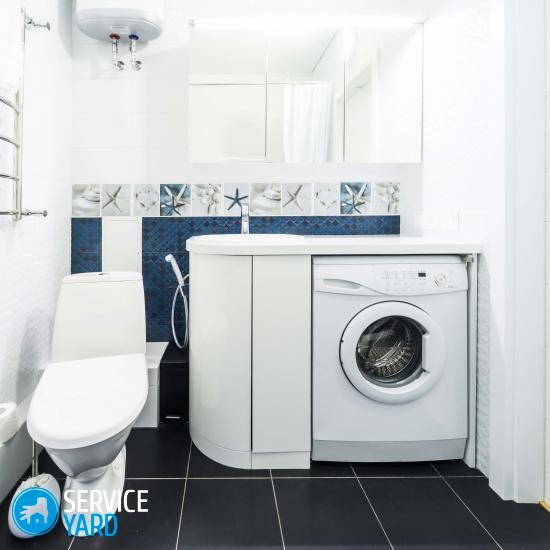 These are the most elementary reasons why the washing machine does not draw water in full. Household appliances of this type - a rather complicated device with an electronic control unit. Let us examine the most difficult reasons why the washing machine Beko, LG, Samsung, Ariston, Zanussi, Ardo, Indesit, Atlas do not gather water.
These are the most elementary reasons why the washing machine does not draw water in full. Household appliances of this type - a rather complicated device with an electronic control unit. Let us examine the most difficult reasons why the washing machine Beko, LG, Samsung, Ariston, Zanussi, Ardo, Indesit, Atlas do not gather water.
Complicated reasons for the lack of water in the washer
In addition to the above factors, there are a number of reasons for the lack of water supply. Most of them can be fixed only in the conditions of a professional service center.
Broken programmer or control module
Electromechanical programmers are a very complex functional unit. The main defects of the high-tech unit arise in the contact systems of the control modules, due to the ingress of cleaning solution or directly water. Also, the cause may be a short circuit in the external circuit.
A complex defect, of course, will give you a lot of trouble, because the device must be sent to a service center and completely replaced. If the defect is not very difficult, then you can eliminate it at home. But only a qualified specialist can determine the complexity of a breakdown.
The valve on the water supply broke
Water is fed into the household appliance under pressure, which is inevitably present in the water supply network. The opening of the flow occurs through a special valves - valve. Its position is corrected by signals from the control module. If the inlet valve is worn, deformed or corroded, the washer “physically” will not be able to draw water.
The reasons for the failure can be:
- Clogged mesh filter.
- Coil winding burned out.
Virtually all coils are interchangeable. If the cause is a break in the coil in one of the valve sections, then replace the damage with the coil from the other valve.
Valves can be checked independently without removing them from the machine. To do this, you need a power cord with contacts and switch off. The first must be in insulating covers. Procedure:
- Connect the valve inlet to the pipeline with a nominal pressure.
- Energize the winding - this should open the valve.
- Carefully follow how quickly the valve closes after turning off the power.
- If the water is still leaking for some time without power, this indicates that the cuff flexibility has been lost. Item must be replaced with a new one.
The pressure switch is broken
 A water level sensor (pressure switch) is installed to measure and monitor the amount of water that is needed for washing. If the sensor is out of order, the machine is not able to determine the level of water, which means - to make the washing process.
A water level sensor (pressure switch) is installed to measure and monitor the amount of water that is needed for washing. If the sensor is out of order, the machine is not able to determine the level of water, which means - to make the washing process.
It's all about the design of the pressure switch:
- In the process of water entering the unit's tank, the air in the lower chamber of the sensor and the hose acts on a flexible diaphragm made of rubber.
- Under pressure of air, the diaphragm (membrane) is arched, the tip of the pressure pad presses the spring of the contact group.
- As soon as the required water level in the tank has appeared, the contacts are switched on and off the power from the water supply valves - the washing machine is transferred to the washing mode.
- As soon as the laundry absorbs the water entering the tank, the pressure sensor will supply power to the water supply valve again - the machine will reach the required level.
Important! To fully verify the operation of the pressure sensor, disconnect the pressure hose and attach a piece of the same rubber or silicone hose instead. Blow it and, when switching the contact springs, you will hear distinct clicks. If you are convinced of a malfunction of the water sensor, then call the wizard to replace it. He will fix the breakdown, which means that you will no longer be puzzled as to why the washing machine does not get water.
If checking the valve, head and filter did not give the expected result, then contact qualified specialists for help. Seeing exactly what broke is almost impossible with the naked eye. Therefore, do not play with charades with equipment, because self-repair can often produce more serious, and therefore more costly in terms of elimination, breakdowns.
After the usual start you noticed that the washing machine does not collect water? Or water is poured, but too slowly? The cause of the malfunction can be either in the blockage of the system or in the breakdown of parts of the AGR.
What if the washing machine does not work? Switching to hand washing is not an option. After reading the article, you will learn how to independently detect and fix the damage.
The reasons why the washer pours a little water can be very simple. Before disassembling and repairing, check these parts:
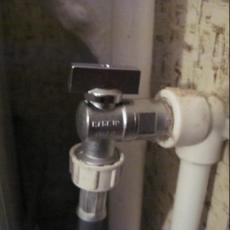
Have you checked everything but found no problems? How much water should a washing machine get at all? It all depends on the selected mode. For delicate fabrics and baby clothes, usually more water is poured. In any program, it should be sufficient for washing.
Malfunctions resulting in slow water intake
The simplest problem may be clogged intake filter. All the small debris that comes from the water supply is stopped by the filter. It protects the filling valve. But there are more unpleasant breakdowns:

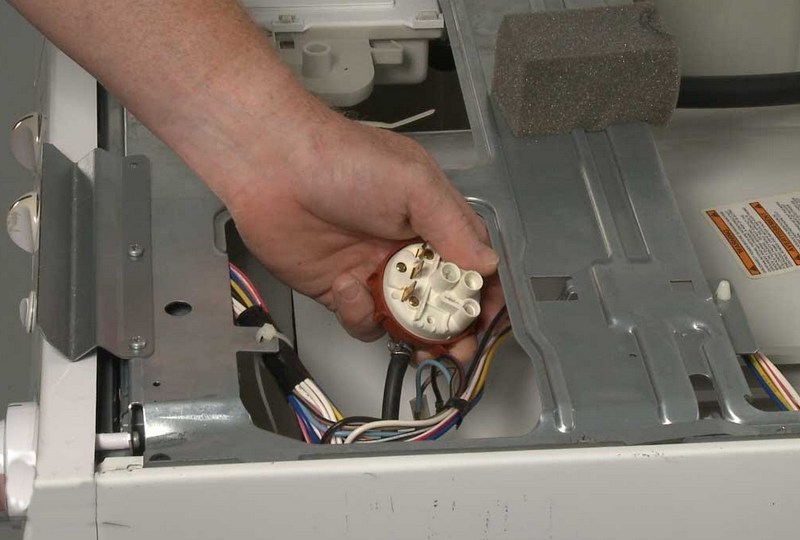
Self troubleshooting
What to do if the machine "Siemens", "Hansa", "Samsung" has ceased to draw water? Begin to inspect parts and troubleshoot.
Cleaning the intake filter
Shut off the inlet valve, unplug the machine from the power supply. Prepare the tank and unscrew the suction hose. Immediately behind the hose you will notice a mesh filter. Remove it with pliers and flush it with a tap.
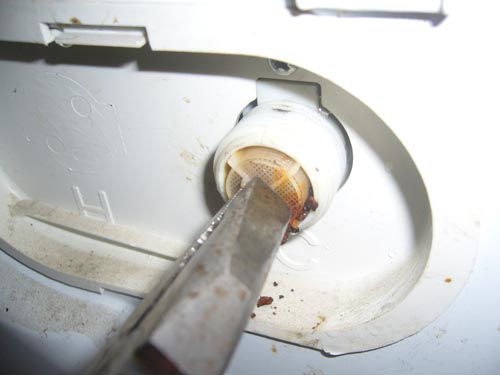
Replacing the filling valve
To test the valve in various types of washers - “Ariston”, “Indesit”, “Electrolux” - you need to remove the top cover from the body. At the rear wall is the inlet valve. 
Inspect the valve for damage. To check the health of his work, alternately apply current to the coils. At the same time the valve turns on and opens in working condition. If nothing happens, you need to replace the part.
- Disconnect the wiring from the valve.
- Unclench the hose clamps and remove them from the valve.
- Inspect the hoses for blockage. The reason for the slow withdrawal may be in the reduced capacity of the hoses.
- Loosen the valve mounting screw and remove it from the body.
Level sensor replacement
A broken pressure switch can not be repaired. To replace it, you also need to remove the top panel. Depending on the model of the machine, the sensor can be attached to the body with bolts or snaps.
- Disconnect all wires leading to the sensor as well as the hose.
- Remove the sensor from the housing.

You can check the pressure switch in this way:
- In place of the hose removed, install a short tube.
- Pick up the phone.
- If you heard clicks, it means that the sensor is working.
- If you do not hear anything, it needs to be replaced.
Hatch lock
Broken hatch lock? It is easy to replace yourself:

If the washer collects less water due to problems with the module, then you should contact the service center. Self-repair fee is not recommended.
Automatic washing machines have long become indispensable helpers of modern hostesses. But, unfortunately, they, like any other technology, have their own life. Recently, many of us have had to deal with a problem when a washing machine does not get enough water. The reasons for such failures, we consider in today's article.
Why is water too slow?
This is one of the most common problems that most owners of such equipment face. Of course, it happens that (the reason for this breakdown will be considered a little lower), but more often than not, the liquid still enters the drum, only very slowly. This may be due to several factors.
First of all, you need to check how much water is supplied to the faucet. It is likely that its pressure is too low, so the technique cannot function normally. In addition, it is recommended to check whether the fluid inlet valve to the drum is not blocked.
If the washing machine does not take in water, the reason may be a clogged filter on the inlet valve. Visually, this element looks like a dense mesh that retains all contamination. Frequent and excessive use of the filter leads to loss of initial throughput.
Why does the liquid not flow into the drum at all?
If you chose the necessary program and turned it on, but the washing machine does not take water, the reason for such a failure may be not one, but several at once. If you do not have the opportunity to call the master, you can take a chance and try to deal with the breakdown yourself.

First you need to make sure that you do not accidentally shut off the tap that regulates the flow of fluid into the drum. This is easy to do, since usually this valve is located at the point where the rubber hose of the machine is connected to the water supply.
In addition, such a failure can be triggered by the instability of the pressure. We will immediately reassure those who do not know why the “Bosch” washing machine does not get water (the causes of such failures are often the most unexpected) that this is one of the most unsafe and easily fixable problems. To resolve this issue, it is enough to make a call to the housing office in order to hasten its staff to establish a normal water supply.
If none of the above reasons fit your case, then it is likely that you simply did not close the door of the door through which the laundry is loaded. When the door is open, the equipment will simply not turn on, since a kind of flood protection will work.
Why is washing machine picking up and draining water?
The reason for this failure may be hiding in the incorrect connection of the drain to the sewer. Often, such a failure occurs after the unit is moved to another location. In this case, you need to consult the instructions of the manufacturer. It is important that the drain hose is fixed above the level of the tank. As a rule, this distance is about half a meter from the floor. This helps to prevent the continuous flow of fluid into the sewer system.

If, after a long and successful operation, the Indesit washing machine does not collect water, the reason may be hiding in serious breakdowns of internal parts. It is desirable that a qualified technician deal with the elimination of such a failure, because in order to get to some of the elements, it will be necessary to disassemble almost the entire unit. Those who decide to independently resolve such a problem need to realistically assess their own capabilities.
Why does a washing machine get a lot of water?
The causes of overflow can be hidden in the malfunction of the pressure switch. This element controls the amount of fluid poured into the drum. It is a small sensor that is triggered after the tank is filled to a certain level. The most common causes of failure of this part are: loss of tightness of the membrane, burnt or oxidized contacts. Only an experienced specialist will be able to accurately determine whether the pressure switch is working properly.
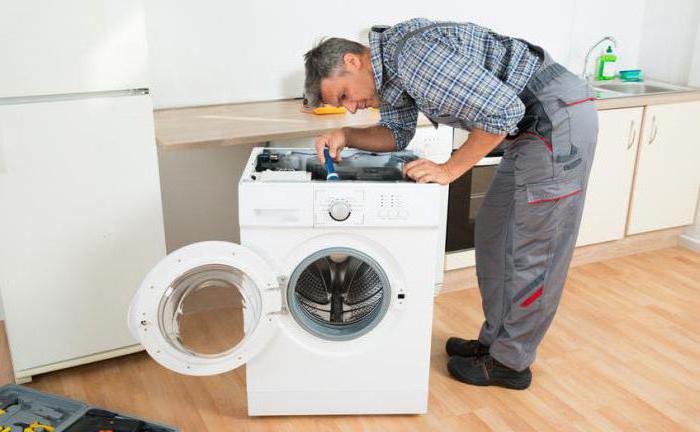
Also overflow can be associated with a violation of the sealing system that controls the water level. In such cases, the problem arises due to a malfunction of the hose connecting the pressure switch to the tank. It may be clogged with dirt or air. As a result, the sensor receives unreliable information about the amount of liquid in the drum.
Often, such failures are the result of a malfunction associated with natural wear and tear on parts. In addition, sometimes it is clogged with particles of dirt or rust contained in tap water, which has never been crystal clear.
Diagnostic methods
If the “Samsung” washing machine does not draw water (we have examined the causes of this problem above), then you should immediately look at the documents attached to it. Having found out that the equipment is still covered by the warranty, you cannot repair it yourself. It is necessary as soon as possible to take it to the appropriate service center, where specialists will take care of it.
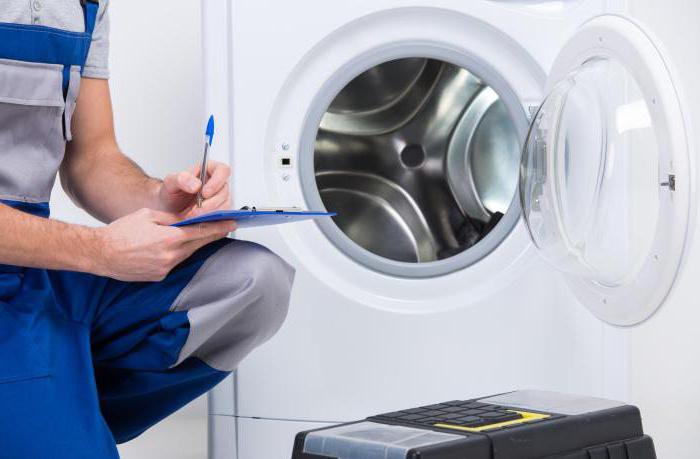
If the warranty period has already expired, you can try to fix the damage with your own hands. To check how the pressure sensor works, it is recommended to unscrew the water supply hose and blow into it. If it is working, then you will hear a characteristic click.
To test the automatic lock, it is necessary to disassemble the hatch and make sure that in the process of closing the door the limit switch of the relay is pressed against the tongue.
Faults that cannot be repaired
If the machine stops to draw water due to breakage of the sensor that controls the level, you need to contact the professionals. The basis of the design of this element is the principle of ejection of air entering the working hose hose. Fluid entering the system begins to press on the air, which, in turn, affects the rod. As a result, overlapping of the feed takes place and the washing machine does not draw water. The reason related to pressure is difficult to eliminate.
![]()
If the malfunction is caused by a programmer failure, then the repair should also be carried out in specialized service centers. This is one of the main parts of the washing machine, thanks to which it can fully function. All complex electronic components included in the design provide the supply and discharge of fluid.
Ways to fix the most common breakdowns
It should be noted that the repair should be the one who has an adequate supply of knowledge about electronics and household appliances. If the malfunction is caused by a non-closing hatch, then the door should be disassembled and the metal rod fixing the lock tongue should be returned to its original position. In some cases, there is a need to purchase a new thermal block.
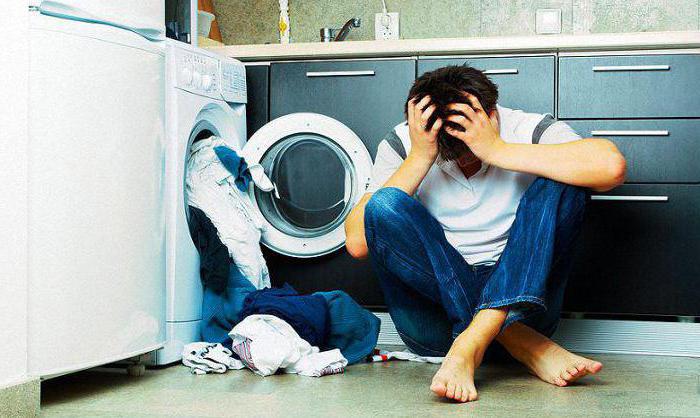
If the problem lies in the failure of the intake valve, it is recommended to unscrew the water supply hose and check the filter. Maybe he huddled, then wash it and put it in place. If it is a blown coil winding, then it should be changed.
Breakdown prevention
Most of the malfunctions that cause the machine to stop collecting water, occur as a result of violation of generally accepted operating rules. To avoid problems, just follow a few simple recommendations.
In any washing machine has a special compartment for collecting various small items such as buttons, coins and ribbons. Do not forget to periodically inspect the bottom of the hatch.
It is also necessary to protect the equipment from power surges. To do this, it is desirable to purchase a protective device off. So that the internal parts of the washing machine does not appear scum, it is recommended to add special prophylactic agents when washing.
Malfunction of home appliances is always unpleasant for the owners. A breakage of the washing machine - even more so. We are so accustomed to daily fast cycles or large Sunday washings, that we don’t even think about how much work was done in a simple Kyrgyzstan-type centrifuge.
The source of breakage of the washing machine is not always possible to determine at a glance. You need to be an experienced master, with extensive experience. Of course, 85 -90% of breakdowns are the same for all washing machines, because their mechanisms differ little from each other. However, there are also unique ones that depend on individual operating conditions and features of the washing machine.
In any case, it is useful to know the list of possible reasons in order to be able to correct some of them on your own.

We will consider the stereotypical sources of faults in a washing machine in the event that water does not flow into it.
Sources of problems
Why is there no water in the washing machine? It would seem that everything is simple, the reasons for a maximum of one or two. However, the number of possible sources of such a malfunction will surprise you greatly. The mechanism of water entry into the drum is simple: the inlet valve controls the flow of the required amount of water from the riser into the drum of the machine.
Rust from the riser clogged mesh intake filter. This often happens when an emergency shutdown of water for several days. At the moment when water is supplied again, debris and pieces of rust clog the inlet filter and water does not flow into the machine;

How to fix
Unscrew the inlet hose with a neat, suitable tool, remove the intake filter screen, which is shaped like a thimble, rinse it out if there are traces of contamination. A clean filter is a signal that a fault is elsewhere.
- Some models of cars, for example, manufactured by Samsung, are designed to connect to both cold and hot water at the same time, in order to save electricity for heating. In this case, washing and rinsing come from different sources. If water does not flow into the washing machine drum, see if the valve is open, shutting off the water supply?
- Perhaps the water pressure in the riser is not constant or insufficient for the machine to draw water into the system;
- Recently, various filters for cleaning the system have been installed on the water supply system to the apartment, and they are installed on both cold and hot water; perhaps the filter on the input clogged debris and it needs to be cleaned;
- The door is not closed, the lock did not work, water does not flow and the automatic machine does not start the cycle, since the door lock is part of the system that protects against leakage; perhaps the tongue of the lock has shifted and is in the wrong position, preventing the door from slamming;
- The lock of the door of the machine is broken, it does not close, so the mechanism protecting against leakage works;

How to fix
Door lock can be replaced independently, with certain skills; This is a simple mechanism.

More serious damage
- An intake valve malfunction that is caused by a breakdown of the flow system that regulates the amount of water. With the machine will have to remove the top cover. The inlet valve is located on top. It is necessary to remove the rubber reducer to reduce pressure, which can also be washed. But the main thing is to believe whether the valve system is working. This can be done by disconnecting the terminals and applying current to the coil. The core of the coil in this case will rise. If this does not happen, then the reason is in the mechanism of the intake valve and it will have to be replaced.
- Malfunction of the electronics controlling all cycles is the reason due to which water does not flow in or out of the washing machine. In addition to the malfunction of the main board, the reason may be that there was an open circuit at the input to the electronic control unit. Measure the signal from the electronic unit of the machine. If it is an open circuit, it can always be eliminated.
- It is possible that the electronics are faulty, this is the reason for the poor operation of the pressure switch (a device that responds to the water level collected in the system); repairing such damage yourself is not recommended. Having rummaged in the machine, having looked through all possible reasons and sources, all of you do not understand why water does not enter the LG washing machine? Watch the video, which is offered by experienced masters to help non-professionals. Still not clear? In this case, call the master on the house.

If the machine is under warranty, there is no need to inspect it yourself. This will make the master, who came to your call. Perhaps the washing machine will have to be taken to a service center.
Remember: your machine repair actions may void the warranty!
Preventive measures
Everyone knows the rule - that things serve for a long time, treat them carefully. In the case of a washing machine, there are a few more mandatory rules. Which will help prevent some troubles:
- Use the instructions. This is a voluminous copy, where on several pages your actions in this or that case are described in detail. The instruction will help to avoid elementary mistakes in programming the cycle, and thus prolong the operation of the machine;
- Many manufacturers of washing machines, such as Samsung or LG, recommend doing the first test run of the machine after installation. The cycle is started without laundry in order to eliminate residual grease and dirt;
- Do not try to save electricity by pouring heated water into the drum if it is not provided for it. This has a bad effect on the duration of the life;
- Do not load volumes of laundry into the drum, more than recommended. This is fraught with more serious breakdowns;
- After washing, dry the machine and wipe the rubber gasket of the tank. Even if the machine is standing with the lid open, water may remain there, which over time will lead to the development of mold and fungi;
- Use water softeners and prevent scale formation; Specialists from companies producing Samsung or LG washing machines strongly recommend not to wait for the machine to scum, but to remove it in a timely manner;

Install the machine so that it is as smooth as possible. Do not forget to remove the shipping bolts.


